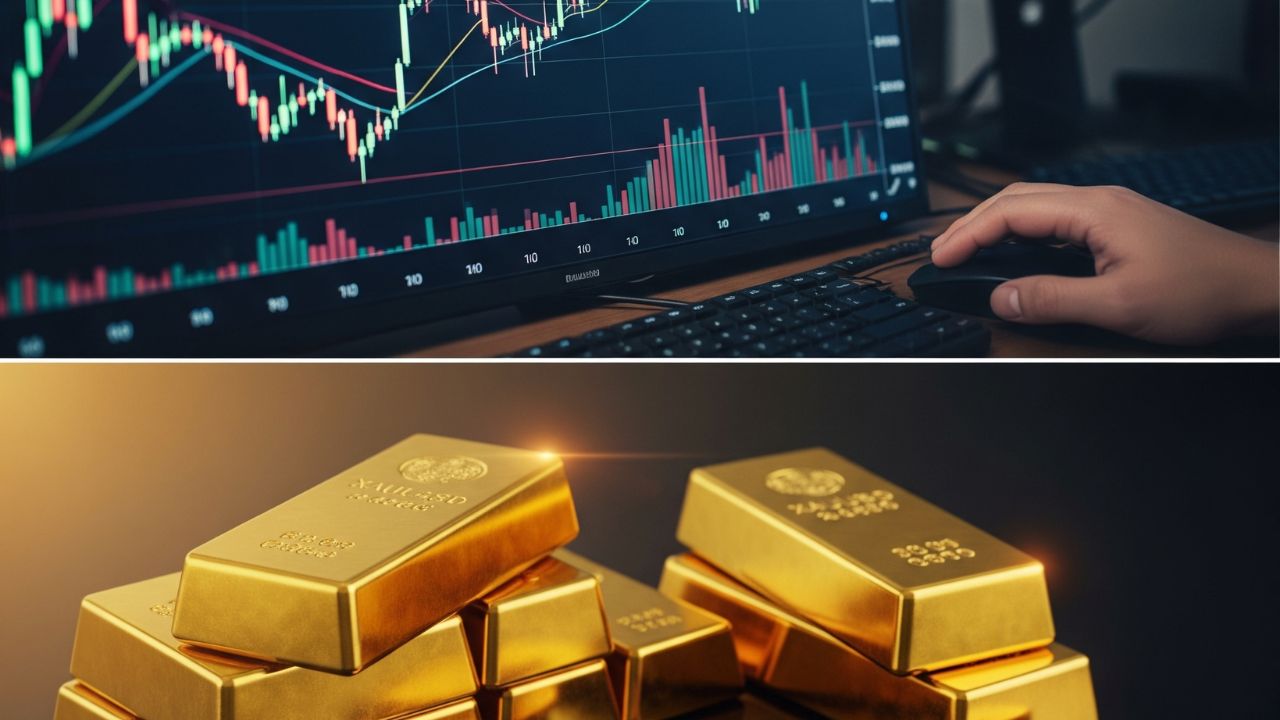Gold has been valued by humans for thousands of years. In ancient times, people used it to make jewelry, coins, and symbols of power. Even today, gold is seen as a safe and trusted form of wealth. To many people, gold is not just a metal. It represents security, trust, and financial stability.
But how is the price of gold actually decided? Who decides it? And why does gold continue to hold value even in modern times? Let’s understand this step by step.
Table of Contents
Why Gold Has Value?
Gold is valuable because it is rare, durable, and universally accepted. Unlike paper money, gold cannot be printed. Unlike other metals, it does not rust or lose shine. This makes it an excellent store of value.

In addition, gold has cultural and emotional value. People buy it during festivals, weddings, and as gifts. Central banks also keep gold as part of their reserves because it builds trust in the stability of their currency.
So, gold has both practical value (it is limited and lasting) and emotional value (people trust it across cultures and generations).
History of Gold Pricing
The practice of setting a standard gold price started more than 100 years ago. In 1919, a group of five banks in London began meeting daily to agree on a single price for gold. This process was called the London Gold Fixing. At that time, it gave the world one trusted reference price for trading gold.
Over time, the system changed. Instead of a small group of banks, today the London Bullion Market Association (LBMA) manages the official global gold benchmark. The LBMA Gold Price is published twice a day in U.S. dollars, euros, and British pounds. It is widely used by banks, jewelers, investors, and central banks as the reference point for gold pricing.
This history shows how gold pricing moved from private meetings to a transparent and regulated process that the whole world can trust.
Key Institutions and How They Fit Together
The gold market is made up of several important players who together decide how gold is traded and priced:
1. The OTC Market (Over-the-Counter)
Most gold trading happens in the OTC market, which is a global network of banks, dealers, and institutions. There is no single physical marketplace. Instead, large buyers and sellers trade directly with each other.
2. The London Bullion Market Association (LBMA)
LBMA is a key institution that sets the reference price for gold twice a day (known as the LBMA Gold Price). This price is used worldwide as a benchmark.
3. Central Banks
Central banks across the world hold large amounts of gold in their reserves. They buy and sell gold to manage economic stability and to build trust in their currency.
4. Gold Mining Companies
These companies supply freshly mined gold to the market. They play a big role in how much new gold enters circulation every year.
Together, these institutions keep the gold market running and influence how its price is set.
The Primary Source of Gold Price
The primary source of gold pricing is the OTC market, where banks and institutions trade gold directly. Since these are large transactions, the price discovered in OTC trading reflects real market demand and supply.
However, the world needs a standard reference price. That is why the LBMA Gold Price is important. It is published twice daily and acts as a trusted benchmark used by traders, jewelers, and investors around the globe.
The spot price of gold reflects the current rate at which gold is being traded in the market. Reliable sources include:
- The LBMA website
- The World Gold Council website
- Trusted financial platforms like Bloomberg, or Reuters
Factors That Influence the Price of Gold
The price of gold is not fixed. It changes every day depending on global events and economic conditions. Some of the main factors are:
- Inflation: When the cost of goods rises, people turn to gold as protection for their wealth. This increases demand and pushes the price higher.
- Interest Rates: When interest rates are low, people prefer to invest in gold instead of bonds or savings accounts, which makes gold more expensive.
- Geopolitical Events: Wars, conflicts, or global crises make investors nervous. In such times, gold is seen as a safe place to put money, so demand rises.
- Supply and Demand: If mining output falls or central banks buy more gold, the supply becomes tighter and the price goes up.
Global Gold Supply and Reserves
Gold is limited, and new supply comes mainly from mining. On average, about 3,000–3,500 tonnes of gold are mined every year worldwide.
Apart from newly mined gold, a huge amount is already held in reserves by central banks. According to the World Gold Council, central banks together hold more than 36,000 tonnes of gold.
Countries like the United States, Germany, Italy, and India have some of the largest reserves. These reserves act like financial insurance for nations, protecting them during uncertain times.
With limited annual supply and huge reserves held by central banks, gold will always remain important in the global financial system.
This article is for informational purposes only and should not be considered financial advice. Investing in stocks, cryptocurrencies, or other assets involves risks, including the potential loss of principal. Always conduct your own research or consult a qualified financial advisor before making investment decisions. The author and publisher are not responsible for any financial losses incurred from actions based on this article. While efforts have been made to ensure accuracy, economic data and market conditions can change rapidly. The author and publisher do not guarantee the completeness or accuracy of the information and are not liable for any errors or omissions. Always verify data with primary sources before making decisions.

